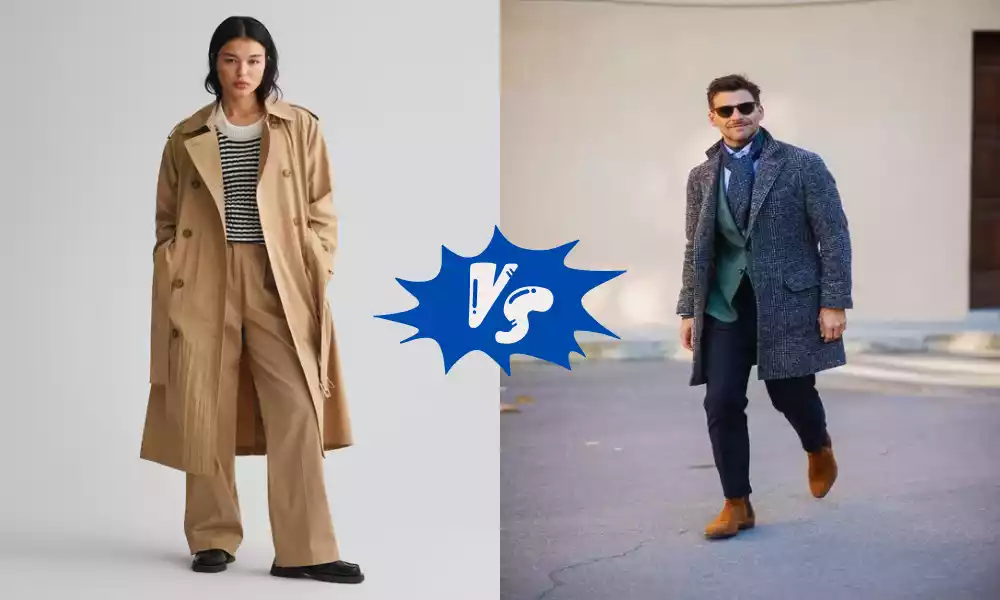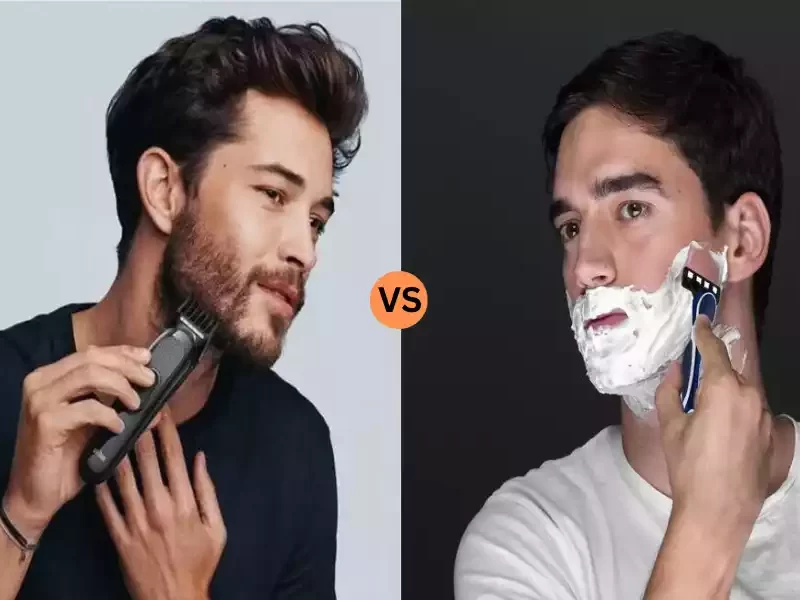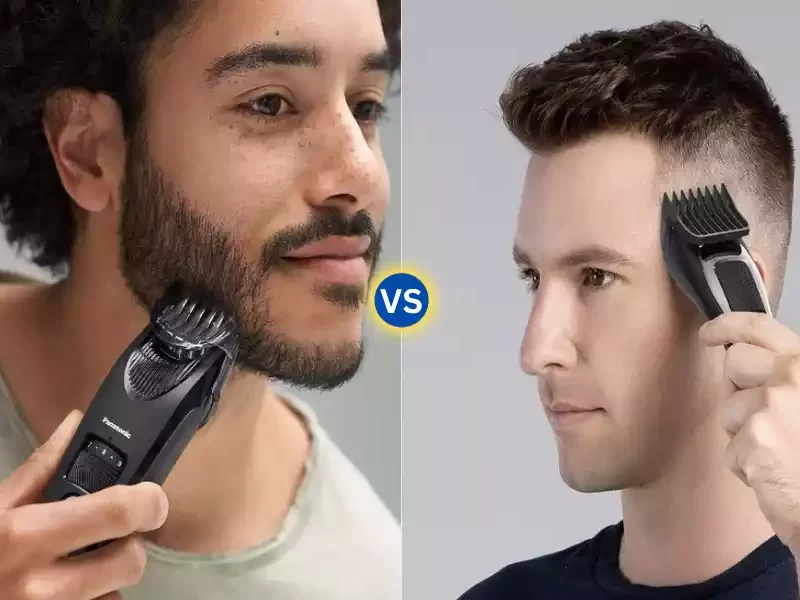Trench Coat and Overcoat are two distinct types of outerwear that serve both fashion and functional purposes. While they share the common goal of providing protection from the elements, they each have unique features, historical backgrounds, and styles that set them apart. Understanding the differences between trench coats and overcoats helps us appreciate their individual contributions to fashion and practicality.
What is a Trench Coat?
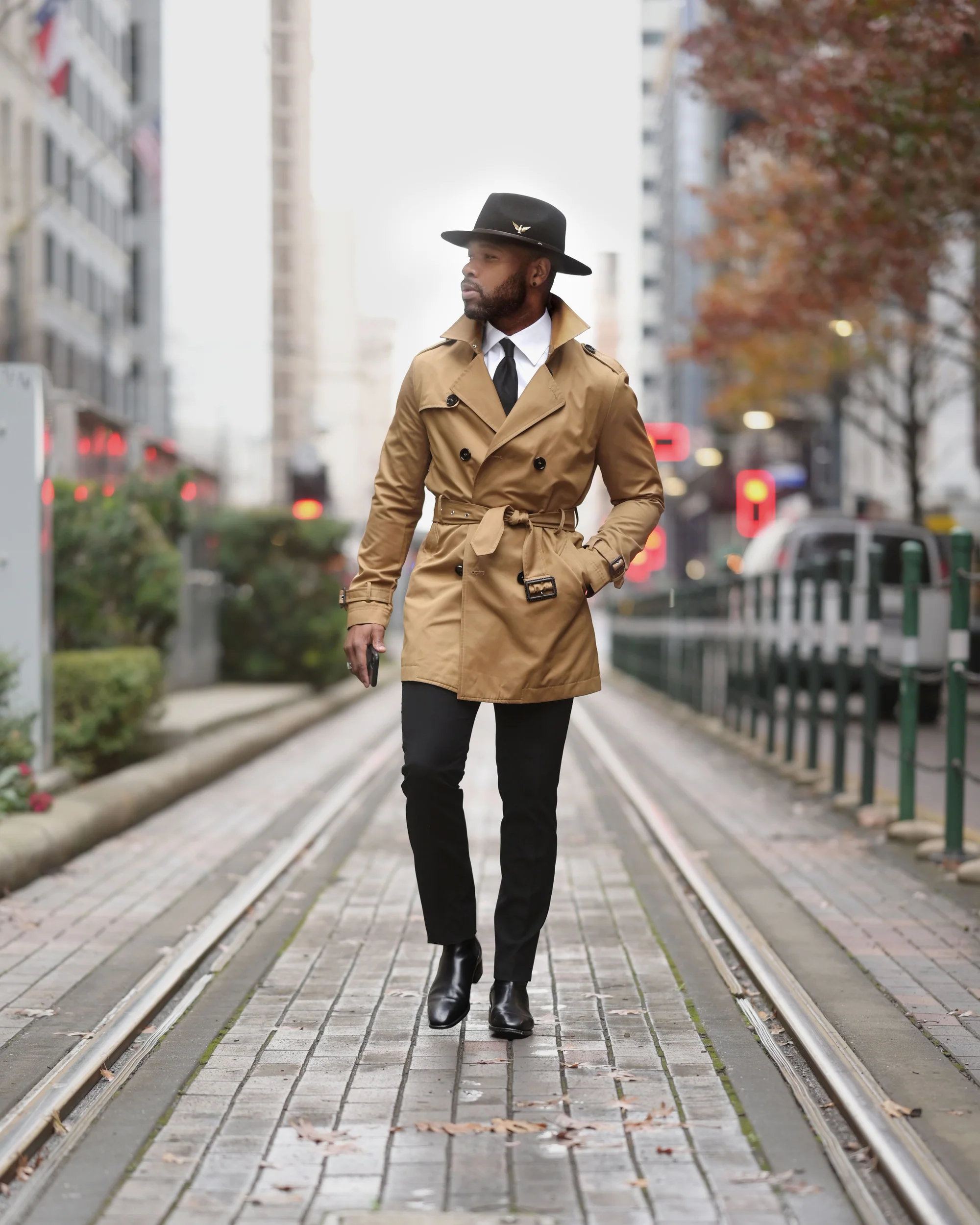
A trench coat is a type of outerwear originally designed for military use but later became an iconic fashion piece. It is characterized by its double-breasted front, often with buttons and a belt, epaulets, storm flaps, and a distinctive knee-length design. Trench coats are typically made from waterproof or water-resistant materials, making them suitable for wet weather.
They are versatile and can be worn for both formal and casual occasions, known for their association with detectives and spies in popular culture. Thomas Burberry is credited with popularizing the trench coat during World War I.
Characteristics of Trench Coat
Trench Coat Characteristics:
- Military Origin: Originally designed for military use, particularly during World War I.
- Double-Breasted Design: Typically features a double row of buttons on the front.
- Belted Waist: Often includes a belt for cinching the waist.
- Epaulettes: Shoulder straps that are a distinctive feature.
- Storm Flaps: Front and back flaps that protect against wind and rain.
- Waterproof Material: Made from waterproof or water-resistant fabrics.
- Knee-Length: Traditionally falls to just above the knees.
- Versatile: Suitable for both formal and casual occasions.
- Iconic in Pop Culture: Associated with detectives and spies, making it a fashion staple.
What is an Overcoat?
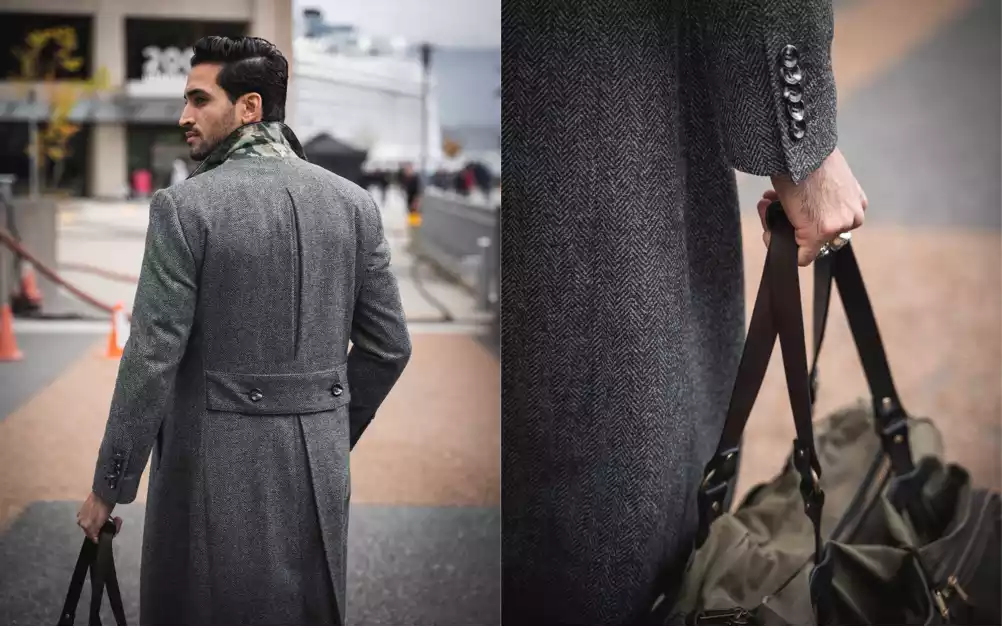
An overcoat is a type of long outerwear designed primarily for warmth and formality. Unlike trench coats, overcoats prioritize insulation against cold weather. They typically have a single-breasted or double-breasted design with buttons or zippers, and they are made from heavier and warmer materials such as wool or cashmere.
Overcoats are often worn over suits or formal attire and come in various lengths to suit different occasions, from knee-length to ankle-length. While they have historical roots in medieval Europe, modern overcoats have evolved to include contemporary styles and materials, making them a classic choice for those seeking a combination of warmth and elegance in their outerwear.
Characteristics of Overcoat
Overcoat Characteristics:
- Warmth Emphasis: Designed primarily for warmth in cold weather.
- Single or Double-Breasted: Can have single or double rows of buttons or a zipper.
- Heavier Materials: Typically made from heavier fabrics like wool or cashmere.
- Formal Styling: Often worn over suits or formal attire.
- Varied Lengths: Available in various lengths, from knee-length to ankle-length.
- Elegant and Formal: Ideal for adding sophistication to an outfit.
- Historical Roots: Originated in medieval Europe and evolved over time.
- Contemporary Adaptations: Modern styles and materials cater to current fashion trends.
- Versatile: Some designs can bridge the gap between formal and casual wear.
Factors to Consider When Choosing a Trench Coat and Overcoat
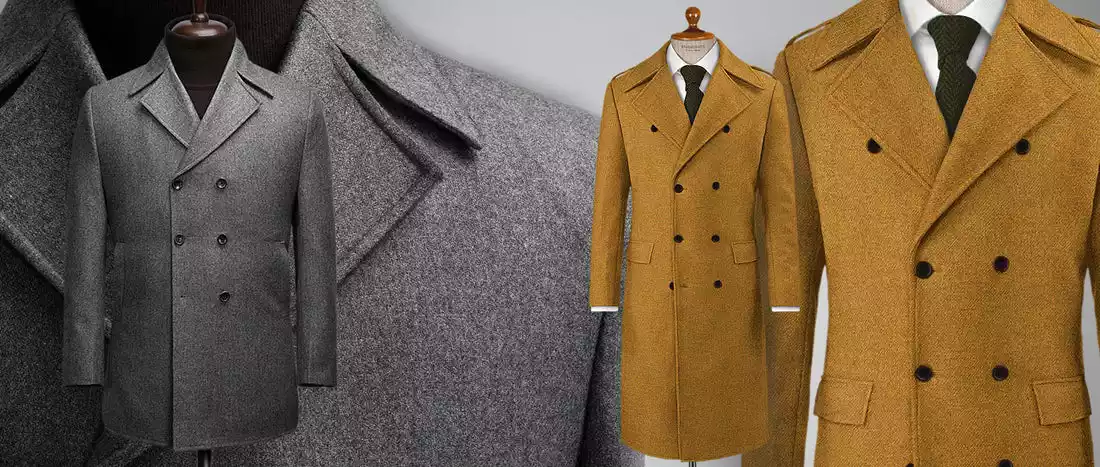
Factors to Consider When Choosing a Trench Coat or Overcoat:
- Purpose: Determine whether you need it for formal or casual occasions, or for warmth in cold weather.
- Fit: Ensure it fits well in the shoulders and chest, and consider whether you want a tailored or looser fit.
- Length: Choose a length that complements your body type and suits the intended use.
- Material: Select a fabric suitable for the climate; trench coats may need to be waterproof, while overcoats require warmth.
- Color: Opt for versatile, neutral colors for easy pairing or statement colors to make a fashion statement.
- Style: Consider the design elements like buttons, belts, and collars to match your personal style.
- Budget: Determine your budget range, as both trench coats and overcoats come in a wide price range.
- Occasion: Think about where you’ll wear it most – work, social events, or daily wear.
- Maintenance: Check the care instructions for cleaning and upkeep to ensure it aligns with your lifestyle.
- Versatility: Evaluate how well it can be styled with your existing wardrobe to maximize its use.
- Brand and Quality: Research reputable brands known for their durability and craftsmanship.
- Trends: Decide whether you want a classic, timeless piece or one that follows current fashion trends.
Considering these factors will help you make an informed choice when selecting a trench coat or overcoat that suits your needs and style preferences.
How to Style Trench Coat and Overcoat
Styling Trench Coats and Overcoats:
Trench Coat Styling:
- Classic Chic Look:
- Pair with tailored trousers, a white shirt, and heels for a timeless and sophisticated appearance.
- Casual Elegance:
- Combine with jeans, a cozy sweater, and ankle boots for a smart-casual ensemble.
- Belted Waist:
- Cinch the belt to highlight your waist, creating a feminine silhouette.
- Layered Outfits:
- Use as a stylish layer over dresses, skirts, or even over a hoodie for a trendy streetwear vibe.
- Accessories:
- Add a statement scarf, fedora hat, or oversized sunglasses to enhance the overall look.
- Footwear:
- Versatile for various shoe choices, from sneakers and flats to heels and ankle boots.
Overcoat Styling:
- Formal Attire:
- Wear over a tailored suit for a polished and professional appearance.
- Smart-Casual Ensemble:
- Pair with chinos, a turtleneck sweater, and loafers for a refined yet relaxed look.
- Layering Piece:
- Use as the outermost layer over a sweater, cardigan, or blazer during colder months.
- Monochromatic Styling:
- Opt for an overcoat in a neutral color that complements your outfit’s palette.
- Scarf Coordination:
- Accessorize with a stylish scarf that contrasts or complements the coat’s color.
- Footwear:
- Depending on the occasion, choose formal shoes like oxfords or more casual options like Chelsea boots.
- Length Consideration:
- Longer overcoats often work well with formal wear, while shorter ones can suit casual outfits.
Be mindful that both your individual style and the particular event can impact the decisions you make. Trench coats and overcoats are versatile pieces that can adapt to a wide range of fashion preferences and settings.
Trench Coats and Overcoats for Different Seasons
Trench Coats and Overcoats for Different Seasons:
Trench Coats:
- Spring/Fall Trench Coat:
- Lightweight trench with a breathable fabric for mild weather.
- Summer Trench Coat:
- Unlined, made from lighter materials like cotton for warmth without overheating.
- Winter Trench Coat:
- Insulated and waterproof trench with a removable lining to adapt to colder and wetter conditions.
Overcoats:
- Fall Overcoat:
- Mid-weight wool overcoat for moderate cold without the need for heavy insulation.
- Winter Overcoat:
- Heavier, insulated overcoat made from materials like wool or cashmere for extreme cold.
- Spring Overcoat:
- Lighter wool or cotton-blend overcoat suitable for transitioning into warmer weather.
- Summer Overcoat:
- Rare, but could include lightweight linen or cotton versions for cool summer evenings.
Matching the weight, insulation, and material of your coat to the season ensures comfort and style regardless of the weather.
Trench Coat and Overcoat in comparison table
Here’s a comparison table highlighting the key differences between trench coats and overcoats:
| Feature | Trench Coat | Overcoat |
|---|---|---|
| Design | Double-breasted, often with belts, epaulettes, and storm flaps | Single or double-breasted, buttoned or zipped, simpler design |
| Purpose | Versatile for both fashion and function, suitable for various weather conditions | Primarily for warmth, typically worn over formal attire in cold weather |
| Material | Waterproof or water-resistant materials, like cotton gabardine | Heavier and warmer materials, such as wool or cashmere |
| Length | Knee-length, standard length | Varied lengths, can range from knee-length to ankle-length |
| Formality | Suitable for both formal and casual occasions | Primarily formal, ideal for dressing up |
| Historical Origin | Developed during WWI for military use, later became a fashion icon | Originated in medieval Europe and evolved over time |
| Style Versatility | Can be styled for various occasions and outfits | Typically reserved for formal or business attire |
| Pop Culture | Iconic appearances in movies and TV, associated with detectives and spies | Less prominent in pop culture, but still a symbol of sophistication |
| Maintenance | Requires occasional waterproofing and cleaning | Needs regular cleaning and maintenance, especially for wool versions |
| Seasonal Use | Suitable for multiple seasons with appropriate layering | Primarily for fall and winter, though lighter versions exist |
| Price Range | Wide price range, from affordable to luxury brands | Generally falls in the mid to high price range due to materials |
Remember that personal style and individual preferences play a significant role in choosing between a trench coat and an overcoat. The decision often depends on your specific needs and the climate you live in.
Trench Coats and Overcoats: Celebrities’ Favorites
Trench Coats:
- Audrey Hepburn: Iconic for her timeless style in a trench coat, epitomized in “Breakfast at Tiffany’s.”
- Burberry’s Famous Fans: Celebrities like Kate Moss and Emma Watson often sport Burberry trench coats, promoting the brand’s classic appeal.
- Humphrey Bogart: Known for his trench coat-clad detective roles, he popularized the trench coat in film noir.
Overcoats:
- David Beckham: Frequently seen in tailored overcoats, adding a touch of sophistication to his casual looks.
- Ryan Reynolds: Known for sharp overcoat ensembles, he showcases the versatility of this classic piece.
- Brad Pitt: Often spotted in overcoats, he combines them with various outfits for a polished appearance.
Celebrities often turn to trench coats and overcoats to elevate their fashion game, showcasing the timeless and versatile nature of these outerwear pieces.
Maintaining and Caring for Your Trench Coat or Overcoat
Maintaining and Caring for Your Trench Coat or Overcoat:
- Regular Cleaning: Follow care instructions and have it professionally cleaned as needed, typically once a season.
- Storage: Use a well-ventilated, dry closet with proper hangers to prevent wrinkles and odors.
- Waterproofing: Reapply waterproofing treatment to a trench coat as necessary to maintain its water resistance.
- Brush and Lint Removal: Regularly brush off dust and use a lint roller to keep it looking fresh.
- Repairs: Promptly address any loose buttons, loose threads, or minor damages to extend its lifespan.
- Rotation: Rotate your coats in and out of your wardrobe to prevent excessive wear.
- Protection: Use garment bags when traveling to shield your coat from dust and damage.
- Seasonal Storage: Store coats properly during off-seasons, keeping them clean and protected.
- Avoid Overloading Pockets: Prevent stretching and distortion by avoiding overloading pockets.
- Check Zippers and Fasteners: Ensure zippers and fasteners are in good condition, replacing if necessary.
Proper care and maintenance will help your trench coat or overcoat remain in excellent condition and last for many seasons.
Conclusion
Both Trench coats and Overcoats offer distinct advantages depending on your preferences and needs. Trench coats combine fashion and function with their versatile design and suitability for various occasions and weather conditions.
Overcoats prioritize warmth and formality, making them an excellent choice for colder seasons and more dressed-up events. The decision between a trench coat and an overcoat depends on your style, climate, and the occasions you plan to wear them for.

